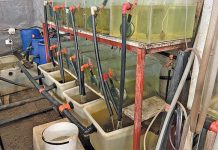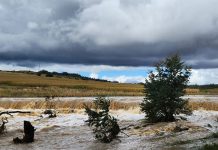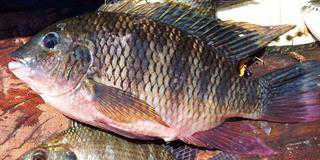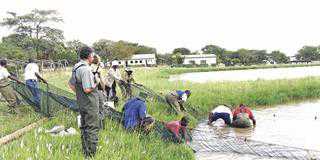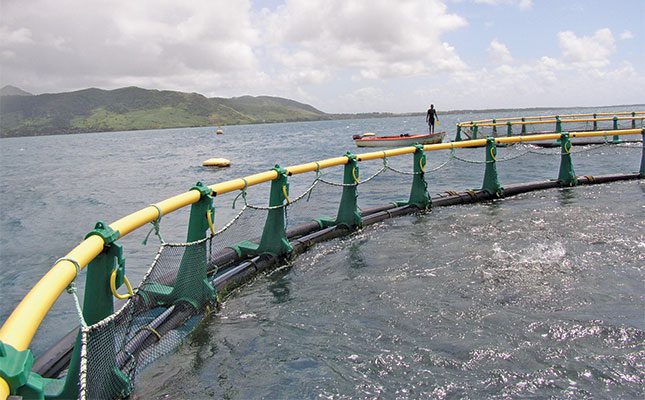
Photo: Supplied
The farming of fish is an enjoyable activity as well as a potentially lucrative business, and this has attracted many entrants to the industry. Sadly, statistics tell us that more fish farms fail than succeed, so it is important for us to consider the reasons why fish farms fail and what potential or existing farmers and/or investors can do to avoid the known hazards.
Market-related challenges
The investment is often based on an assumption that a certain price can be obtained for the fish. However, in reality, sometimes the quantity of fish that can be sold at the anticipated price doesn’t meet these expectations.
So before any significant investment is made, the fish farmer needs to confirm who will buy the fish, what species they want to buy, what size they want, the price they will pay, and the form in which these fish need to be supplied.
In addition, the point of delivery for the fish needs to be confirmed, and all parties need to understand if there is either a seasonal or an annual fluctuation in demand or price.
Also bear in mind that markets fluctuate, so you need to remain in touch with your market and be flexible enough to ensure that you can keep selling your fish at the best possible price.
Water and site requirements
The quality and quantity of water that is available on the proposed site need to match the requirements of the species of fish that is being produced, the infrastructure, and the envisaged scale of production.
Also consider the vulnerability of the water source to possible future negative impacts from upstream developments, such as informal housing, mines and industrial areas. Have a clear plan for the discharged water and how this is to be utilised.
Site selection is another critical consideration. It needs to allow for the access of appropriately sized vehicles to deliver feed and collect fish (to take them to the market). Also ensure that you have access to workers who live locally.
Infrastructure, feed, and the necessary skills
Infrastructure design needs to be appropriate for the species and the scale of operation.
Contract a suitably skilled and experienced aquaculture systems designer to ensure that the design and equipment utilised are appropriate for the species of fish, the scale of operation on the selected site, and the skills level of the labour force
Climate is a pivotal consideration when selecting infrastructure for a particular site to ensure optimal growth throughout the year at the lowest cost.
Feed typically constitutes more than 50% of the operational costs on a fish farm. It is fundamental that the correct quality of feed is utilised to ensure optimal growth of the fish.
The cost of the feed, along with the cost of having the feed delivered to site and the feed conversion that is obtained using that food, all contribute to the price of raising a kilogram of fish, and these costs need to be closely and continuously managed by the farmer.
One of the major shortfalls of fish farms across Africa is a lack of technical skills; ensure that you have the necessary skills to make a success of the infrastructure, species, and scale of production that you are planning. This includes the skills necessary to optimise the health and genetics of the farmed stock.
In addition, management will require business skills, including the ability to manage cash flow and staff.
As with all businesses, legal compliance is a prerequisite for a sustainable business. Management need to familiarise themselves with the relevant legislation that has a bearing on their fish farming operation, including laws pertaining to labour relations, environmental considerations, and reporting.
Another stumbling block to many small businesses relates to the cost and availability of capital. Not only does the cost of capital need to be kept under control, but it is essential to ensure that you have adequate free cash flow to service your monthly obligations.
In addition, a reserve of capital needs to be available to cover unforeseen costs prior to the business becoming profitable.
Start with a detailed plan of action and matching cash flow analysis as a guiding document to assess the apparent viability of the business and identify cash flow requirements.
Details make all the difference
Attention to detail at every level is critical for business success.
This starts with monitoring water quality, growth and feed conversion efficiency, but extends to every facet of the business. Also consider the waste streams to see how those can be turned into income streams.
Following these basic steps will assist in ensuring that you are one of the successful fish farmers. Ultimately, detail-oriented fish farmers will always make more money than those with a casual approach.
Leslie Ter Morshuizen designs and builds fish farms across sub-Saharan Africa, trains farmers to manage them optimally, and has run his own operations. He is the founder of Aquaculture Solutions. Call him on 083 406 0208, or email [email protected].

